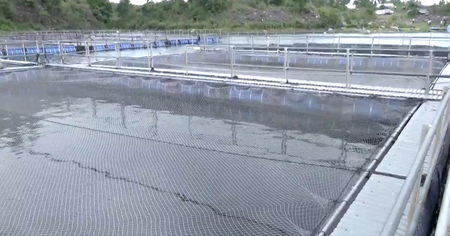
Ramgarh (Jharkhand), June 28 (IANS) Once abandoned and waterlogged coal mines in Ramgarh district of Jharkhand are now buzzing with economic activity, as residents turn to cage fish farming, earning lakhs of rupees and creating employment under the Pradhan Mantri Matsya Sampada Yojana (PMMSY).
Speaking to IANS, Arup Kumar Choudhary, District Fisheries Officer of Ramgarh, said, “The closed coal mines in this region were lying unused for years, filled with stagnant water. With the introduction of cage culture, which was initially limited to reservoirs, locals saw a new opportunity to earn a livelihood from fish farming. They requested that cages be installed in these mines so they could begin employment locally.”
Choudhary added that many residents were already trained in fish farming.
Under a government pilot project in 2013-14, one cage battery was installed in a defunct mine to test the feasibility of cage culture, he said.
“The people replicated the model used in reservoirs. It worked successfully in the mine setting as well. This success prompted the state government to give them full permission to expand fish farming in the mines,” he added.
With support from both district and state-level schemes, as well as initiatives from the Jharkhand government, many local families are now engaged in cage farming.
The fish produced here is not only sold within Jharkhand but also supplied to neighbouring Bihar districts such as Gaya and Sasaram.
“These projects are now a reliable source of income for many families, and have opened doors for employment in production, supply, and marketing,” Choudhary added.
One of the key beneficiaries, Shashikant Mahato from Aara Basti village in Ramgarh, who is actively involved in cage fish farming under the Pradhan Mantri Matsya Sampada Yojana, shared his story.
“This mine was shut in 1999 and remained idle for years. In 2010, we began by releasing fish seed here using our own money. The results were excellent — we harvested up to 27 quintals of fish,” he said.
“In 2012, we started cage culture with 68 cages in one mine. Now, another mine has also been activated, with around 20 people working there. Overall, nearly 100 families in our village are sustaining their livelihoods through this project. Our village has about 250 homes, and this fish farming supports more than 100 of them,” he added.
Mahato also told about how the initiative is growing.
“Every year, around four to six more households join. I believe that in the near future, our entire village will be connected to the fisheries department through this programme.”
With assistance from the government scheme, they have also procured an insulated van for fish transport, improving marketing and supply.
“We are producing around 40 to 60 tonnes of fish annually. Everyone earns between Rs 1.5 and Rs 2 lakh per year. Thanks to the Pradhan Mantri Matsya Sampada Yojana, we are now running our work efficiently and attracting youth to the fisheries sector,” Mahato added proudly.
This transformation of defunct mines into flourishing fish farms is not only boosting the local economy but also setting an example for sustainable livelihood development in resource-depleted areas.
–IANS
brt/khz
